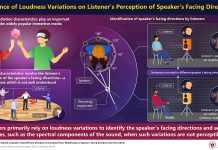
In a new study, researchers found that sending a “selfie” to the doctor could be a cheap and simple way of detecting heart disease.
The study is the first to show that it’s possible to use a deep learning computer algorithm to detect coronary artery disease (CAD) by analyzing four photographs of a person’s face.
The algorithm needs to be developed further and tested in larger groups of people from different ethnic backgrounds.
But the researchers say it has the potential to be used as a screening tool that could identify possible heart disease in people in the general population or in high-risk groups, who could be referred for further clinical investigations.
The research was conducted by a team at the Chinese Academy of Medical Sciences and Peking Union Medical College.
It is known already that certain facial features are linked to an increased risk of heart disease.
These include thinning or gray hair, wrinkles, ear lobe crease, xanthelasmata (small, yellow deposits of cholesterol underneath the skin, usually around the eyelids) and arcus corneae (fat and cholesterol deposits that appear as a hazy white, gray or blue opaque ring in the outer edges of the cornea).
However, they are difficult for humans to use successfully to predict and quantify heart disease risk.
In the study, the team enrolled 5,796 patients from eight hospitals in China to the study between July 2017 and March 2019.
The patients were undergoing imaging procedures to investigate their blood vessels, such as coronary angiography or coronary computed tomography angiography (CCTA).
They were divided randomly into training (5,216 patients, 90%) or validation (580, 10%) groups.
Trained research nurses took four facial photos with digital cameras: one frontal, two profiles, and one view of the top of the head.
They also interviewed the patients to collect data on socioeconomic status, lifestyle, and medical history.
Radiologists reviewed the patients’ angiograms and assessed the degree of heart disease depending on how many blood vessels were narrowed by 50% or more (≥ 50% stenosis), and their location.
This information was used to create, train and validate the AI algorithm.
The researchers then tested the algorithm on further 1,013 patients from nine hospitals in China, enrolled between April 2019 and July 2019.
They found that the algorithm outperformed existing methods of predicting heart disease risk (Diamond-Forrester model and the CAD consortium clinical score).
In the validation group of patients, the algorithm correctly detected heart disease in 80% of cases (the true positive rate or sensitivity) and correctly detected heart disease was not present in 61% of cases (the true negative rate or ‘specificity’).
In the test group, the sensitivity was 80% and specificity was 54%.
The team says the algorithm could be used easily to predict potential heart disease based on facial photos alone.
The cheek, forehead and nose contributed more information to the algorithm than other facial areas.
Researchers say using selfies as a screening method can enable a simple yet efficient way to filter the general population towards more comprehensive clinical evaluation.
Such an approach can also be highly relevant to regions of the globe that are underfunded and have weak screening programs for cardiovascular disease.
One author of the study is Zhe Zheng.
The study is published in the European Heart Journal.
Copyright © 2020 Knowridge Science Report. All rights reserved.



